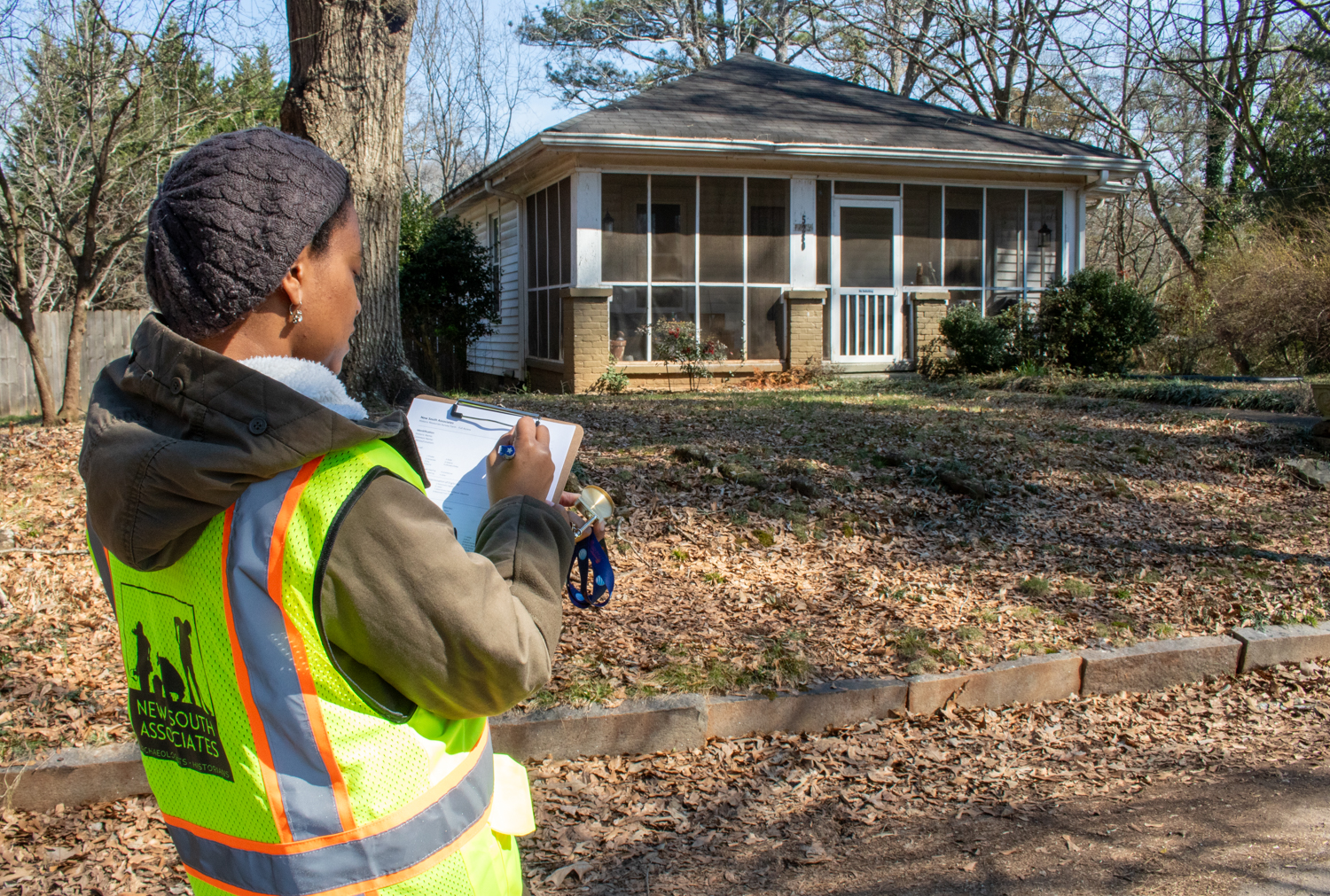Architectural History
Architectural historians with New South Associates (NSA) research and document historic buildings and objects, offering evaluations and assessments for historic registration.


If you’ve ever looked at an old building, or bridge, or a farm complex with many outbuildings and wondered about their history, you’re in the right place! Architectural history is the study of historic buildings, structures, objects, and other aspects of the built environment.
NSA’s architectural historians specialize in researching and documenting these types of resources through archival research, surveys and inventories, comparisons with other resources, photo documentation, measured drawings, and even engineering drawings. These studies may be completed as part of a community’s desire to understand and preserve its built heritage, as part of a larger historical account of a particular location, or to document a resource before it is destroyed.
Architectural History Services
Architectural Survey
The built environment has changed through time in response to technological advances, popularity of different styles, support for growing populations, and expansion of the nation’s transportation system, to name only a few. Buildings and structures, as well as their relationships to each other and to surrounding landscapes, have the potential to reveal a vibrant history of humans and their environment.
An architectural survey provides an account of the types, styles, and features of each historic resource present in the study area. It can also include an analysis of cultural landscape resources such as parks, public spaces, roads, cemeteries, and natural resources present in the historic community.
Historic Structure Reports
A Historic Structure Report (HSR) provides a comprehensive study of all aspects of a specific building or structure. This document typically includes history of the resource, a description of each component of its architecture or engineering, and its current physical condition. It can be helpful for individuals or communities who wish to know more about how to care for their resource and to assist federal and state agencies with planning, preservation, and interpretation activities.
Determination of Eligibility (DOE) / Assessment of Effects (AOE)
Once a historic resource has been identified, it is sometimes necessary or desirable to seek a formal determination of its significance. To achieve this goal, a determination of eligibility (DOE) is typically produced. This process provides detailed information about the resource that is then reviewed by the State Historic Preservation Officer or the Keeper of the National Register.
It is sometimes necessary to assess if or how an historic property may be affected by an action. In this situation, the result is an assessment of effects (AOE). An AOE considers the historic property in the context of the proposed undertaking to see what changes the undertaking may have on the property and involves consultation with the appropriate review agency or agencies.
NSA routinely provides DOEs and AOEs for its clients, particularly state and county transportation departments.
HABS / HAER / HALS
During the Great Depression, the US government recognized the unique value of historic buildings and structures. To help create archivally stable records and preserve the important information, the National Park Service created the Historic American Buildings Survey (HABS), the Historic American Engineering Record (HAER), and the Historic American Landscape Survey (HALS). Together, these programs have grown into the largest archival collection of historic architectural, engineering, and landscape documentation in the country. HABS/HAER/HALS documentation includes drawings, photography, and written narratives. The final work is sent to the Library of Congress collection, the National Park Service, and state and local archives.
NSA’s staff includes historians, architectural historians, and photographers with experience in HABS/HAER/HALS projects throughout the nation.
National Register Nominations
The National Register of Historic Places (NRHP) was established because of the 1966 National Historic Preservation Act. This listing recognizes and commemorates important properties that represent the nation’s diverse heritage. Districts, sites, buildings, structures, and objects are listed on the NRHP if they are deemed to be significant to American history or prehistory on local, regional, or national levels. To be listed in the National Register, properties go through a nomination process that includes a detailed description, a statement of significance, a formal boundary, photography, and a map. Those nominations are first reviewed by the State Historic Preservation Office and then sent to the National Park Service.
NSA is experienced in evaluating and providing assessments of properties for listing and can compile the information and illustrations needed to complete an NRHP nomination.

Architectural History Training Module for U.S. Army
Developed training materials and training delivery methods on historic preservation, historic architecture, and cultural resource management for Army Cultural Resource Managers.
